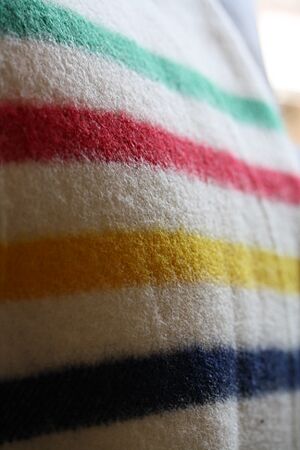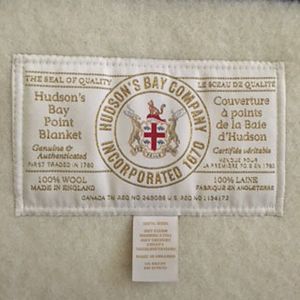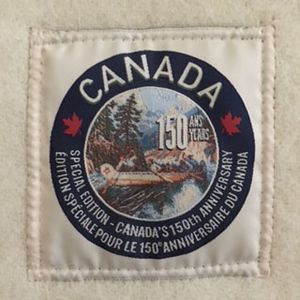Hudson's Bay point blanket facts for kids
A Hudson's Bay point blanket is a special kind of wool blanket. The Hudson's Bay Company (HBC) traded these blankets in North America. This trade started in 1779 and continues today in Canada and the United States. These blankets were often traded with First Nations people for beaver furs. Today, you can still buy them at Hudson's Bay stores in Canada. They have become a famous symbol of the country.
Contents
A Look Back: The History of the Blankets
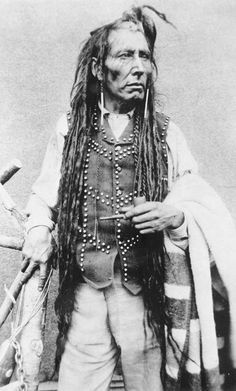
In the early days of the North American fur trade, wool blankets were very important. By 1700, they made up more than 60% of all goods traded. A French fur trader named Germain Maugenest might have been the one who told the HBC to start using point blankets.
At first, these blankets had simple stripes. They usually had one blue or red stripe at each end. By the mid-1800s, the blankets started to feature the famous four-stripe design. This design included green, red, yellow, and indigo stripes on a white background. These colors were popular and easy to dye well back then. In 1798, a mill in Witney, England, received an order for blankets. Witney was a town famous for making wool blankets for centuries.
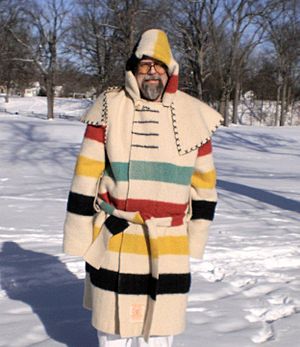
From the very beginning of the fur trade, people used these wool blankets to make warm coats. These hooded coats were called capotes. Both First Nations people and French Canadian voyageurs wore them. These coats were perfect for Canada's cold winters.
What Do the "Points" Mean?
Points are short black lines woven into the edge of the blanket. You can find them just above the bottom set of stripes. These lines are about four inches long, or two inches for half points. They show the total size of the blanket. This way, you can easily tell how big a blanket is, even when it's folded.
French weavers created this "point system" in the mid-1700s. Blankets were shrunk during manufacturing, so this system helped keep track of their final size. The word point comes from the French word empointer. This means "to make threaded stitches on cloth."
Over the years, blanket sizes have changed. This happened especially in the 1900s as beds became larger. During the fur-trade era, blankets of 2.5, 3, 3.5, and 4 points were most common. Today, Hudson's Bay blankets often come in sizes like 3.5 (for a twin bed), 4 (for a double bed), 6 (for a queen bed), and 8 (for a king bed).
Some people mistakenly believe that points showed the blanket's price in beaver pelts. Others thought it meant the blanket's weight. However, all blankets of the same type have the same thickness and quality. A larger blanket will naturally weigh more.
The Story of the Mackinaw Jacket
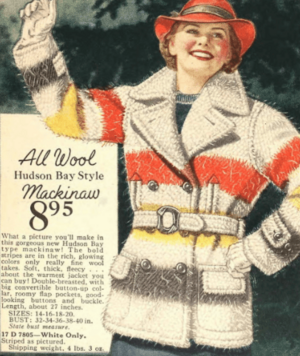
In 1811, at Fort St. Joseph, the King's soldiers needed warm coats. British Army Captain Charles Roberts wrote a letter asking for heavy blankets. He wanted to make greatcoats for his troops because the weather was very cold. He explained that their old coats were worn out.
Captain Roberts asked for HBC 3.5 point blankets from the British Indian Department. John Askin Jr., a Métis man who managed the King's stores, hired local women. They designed and made forty wool greatcoats. Everyone agreed that these new coats were much better than the standard British Army coats. They also helped make the soldiers feel better.
At the start of the War of 1812, Roberts and his men took over Fort Michilimackinac. This fort is now in Mackinaw City, Michigan. Roberts ordered more Hudson's Bay point blankets for the winter. This time, he hired professional tailors and seamstresses to make more greatcoats.
A messenger suggested that the long greatcoats were not practical for deep snow. He asked for a shorter, double-breasted style instead. This new style became known as the Mackinaw jacket. At first, these jackets were blue. Later, the popular red and black tartan pattern became more common. The Mackinaw jacket design was so good for traveling through forests and trails. People from places like Fort William to Penetanguishene ordered them.
More than 100 years later, the Hudson's Bay Company started selling point blanket coats. The Mackinaw jacket remained very popular with their customers.
Where Are They Used Today?
You can buy different versions of the Hudson's Bay blanket today. They are sold at Hudson's Bay stores across Canada. You can find them in solid colors or the classic striped pattern. The blankets have always been made in England. Today, they are made by John Atkinson, a brand of A.W. Hainsworth & Sons Ltd.
The wool used to make these blankets comes from Britain and New Zealand.
In the United States, Woolrich Inc. is the official company allowed to import these blankets. They sell them to stores like Woolrich, Lord & Taylor, L.L.Bean, Getz's Department Store, and Johnson Woolen Mills.
Collecting These Special Blankets
Real point blankets have become very popular with collectors. Some can sell for thousands of dollars! Their value depends on how old they are, their size, color, how rare the pattern is, and their condition.
"Coronation blankets" are especially valuable. For example, a blanket made for Queen Elizabeth II's coronation in 1953 can sell for about $600 if it's in perfect condition. The even rarer 1937 Coronation blanket has sold for as much as $1300.
In 1890, HBC started adding labels to their blankets. This was because other companies were selling similar quality point blankets.
Harold Lee Tichenor, a collector and consultant for the Hudson's Bay Company, has written two books about point blankets and collecting them.
In April 2017, HBC changed the blanket label. They turned it sideways to easily show English and French text. The crest on the label was also updated with red on the flag. To celebrate Canada's 150th Anniversary in 2017, HBC added another special label. It showed voyageurs in a canoe with "Canada" printed above them.
On May 2, 2020, HBC celebrated its 350th anniversary. They released special, limited-edition blankets. These blankets came in different historic colors and patterns. They added a "Special Edition" label with a picture of the sailing ship Nonsuch. It also said "Celebrating HBC's 350th Anniversary."
Some of these special anniversary blankets included:
- The Sky Blue Hudson's Bay Point Blanket
- The Camel Hudson's Bay Point Blanket
- The Ice Cream Hudson's Bay Point Blanket
- The 350 Commemorative Hudson's Bay Point Blanket
- The Gold Hudson's Bay Point Blanket
- The Scarlet Hudson's Bay Point Blanket
Names in First Nations Languages
The Hudson's Bay blanket was known by different names in various First Nations languages. Here are a few examples:
- Baahlaads gyaa'adaay, in the Haida language
- p̓a̱lx̱a̱lasǥa̱m, in Kwak'wala
- ʔa·q̓unaq, in Kutenai language


